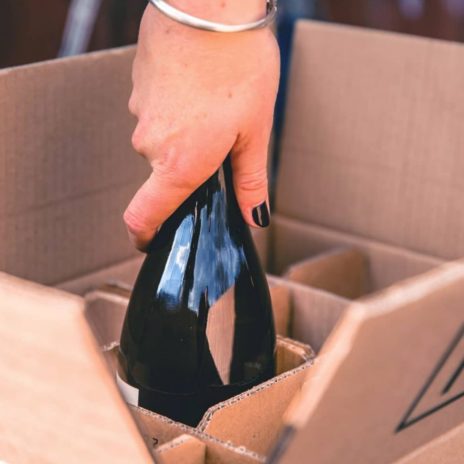‘Mt Difficulty Wines’ is arguably one of New Zealand’s most well recognised and iconic wine brands. The Mt Difficulty story started in the early 90s where the owners of 5 newly planted vineyards in the Bannockburn region of Central Otago decided to work together to make wines under one label. Having some of the oldest vines in the region, the first vintage in 1998 happened to be only a small production of Pinot Noir and Chardonnay. These wines won Gold and Silver medals respectively at the ‘Air New Zealand Wine Awards’ in 1999 and put Mt Difficulty on the map. Flash forward 20 years and there are now more single vineyard wines, a new label and ‘Mt Difficulty wines’ now span many Vineyards all over Central Otago.
Finding a name for the label was actually the hardest part of their launch! One of the original settlers of the Wakatipu basin were employed with the task of taking a flock of 3000 sheep to Bannockburn from the other side of the South Island. This arduous task encountered many rivers and mountain crossings and try as they did, they reached the Kawarau Gorge and found the gap between the bluff and the river was too narrow to cross - the mountain directly above this bluff was called “Mt Difficulty”.
In 2004 a major change happened with the launch of their second label ‘Roaring Meg’. The harvest was producing such abundant fruit that they had an opportunity to experiment and try a different style from their signature range. The first release was a Pinot Noir, and the fruit forward palate and early drinking style of the wine was so well received by the public that ‘Roaring Meg’ has been a mainstay at ‘Mt Difficulty’ ever since. The name dates back to when early settlers first reached the area in the 1860’s, and an early party of diggers took a couple of enterprising women with them however when it came to crossing a gushing stream, one young woman made such a fuss that they named the stream after, you guessed it, ‘Roaring Meg’. The other woman on the trip was relatively relaxed about the endeavour so they named the next stream ‘Gentle Annie’. We shall keep an eye out for Mt Difficulty’s next label eh?
The entire ‘Mt difficulty’ range is unmissable. The vine age give the Pinot Noir a certain complexity and concentration that is often compared to those grapes from Burgundy. The Sauvignon Blanc is alive with fruit complexity, while the Pinot Gris is a full textured off dry style with white peach characters throughout.
Find out more about Mt Difficulty and their wines and on their website here.
